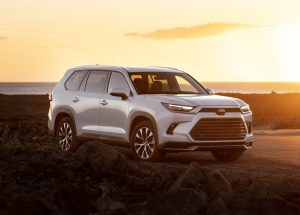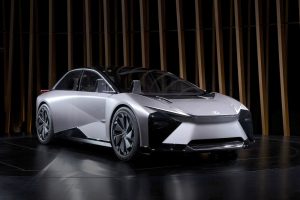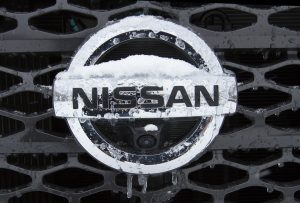In a rare and unexpected setback, Toyota suffered a 20% dip in its operating profit for the most recent quarter. The automaker was hit by a variety of problems, including recalls and quality snags that delayed the launch of the new 4Runner. But a senior U.S. official said the Japanese giant expects to get back on track in months ahead.

Toyota saw its quarterly profits fall on a year-over-year basis, in part, due to snags with the new 4Runner.
For the first time in two years, Toyota saw its operating profit fall during the July-September quarter, the second in its fiscal year. The numbers slid to $8.16 billion from $10.13 billion a year earlier. The automaker also saw its operating profit margin — typically among the industry’s best, slide from 12.6% to 10.1% during the same period.
Officials said a variety of issues led to the poor performance. For one thing, quality snags delayed the rollout of the next-generation 4Runner SUV by about two months. There were also additional quality issues at the truck-making subsidiary, Hino. Further denting its image and bottom line, Toyota faced some costly recalls during the quarter.
All told, these headaches raised costs and reduced sales during the quarter. But, “even though we had a bad quarter, we’re hoping to pull it (back together) for the full-year,” Group Vice President David Christ, the U.S. head of the automaker’s Toyota Division, said during a meeting of the Automotive Press Association in Detroit on Wednesday.
Headwinds
Toyota’s weak performance during the second fiscal quarter stands in marked contrast to its previous quarterly numbers, an $8.9 billion profit. That period saw the automaker buoyed by strong sales and favorable exchange rates, among other things.
This time around, however, there were multiple headwinds. In Japan, Toyota was forced to issue a stop-sale for three of its smallest models — the Corolla Fielder, Corolla Axio and Yaris Cross — when it was revealed they were improperly certified.
Quality and certification issues also impacted a number of other regional and global product lines, causing headaches for Hino and minicar brand Daihatsu. For the U.S. market, one of the biggest challenges was the two-month delay in launching the latest 4Runner update due to production line snags.
There was a stop-sale on two other new SUVs: the Grand Highlander and Lexus LX due to faulty airbags. And the Toyota Tundra and Lexus LX were recalled in order to make complete replacement of defective engines in about 100,000 of those vehicles.
More Toyota News
- First Drive: 2025 Toyota Camry – Hybrid Power Takes it to a New Level
- First Drive: 2024 Toyota Land Cruiser
- First Drive: the Spicy 2024 Toyota GR Corolla Premium
Taking a make-up
Those setbacks were felt on both at the assembly line and in dealer showrooms. In Japan, Toyota saw production drop by 9.9% for the quarter, it reported, to 991,000 vehicles. In North America, the automaker assembled 482,000 vehicles, a 7.7% year-over-year decline.
“The first effort will be to recover production volume,” CFO Yoichi Miyazaki Miyazaki said during a media briefing.
In the U.S., the production delays, recalls and stop-sale orders further exacerbated Toyota’s struggle to keep dealers well stocked. In an industry where retailers typically try to keep at least a 60-day supply of unsold vehicles on hand, the automaker ended the quarter with a mere 12-day stock, said Christ. And, in some cases, customers waited for car haulers to arrive at showrooms to get the vehicles they wanted.
A good year ahead?
Despite such headaches, Christ said, “We expect to be the number one retail brand (in the U.S.) again,” though Toyota is likely to lag behind General Motors in overall sales. The Japanese maker traditionally minimizes daily rental and other fleet sales.
The Toyota brand boss said he expects 2025 will be a “great year.”
That depends, of course, on avoiding a repeat of the problems that made the most recent quarter so challenging.











We’ll see how they do with the new Sherriff in town.